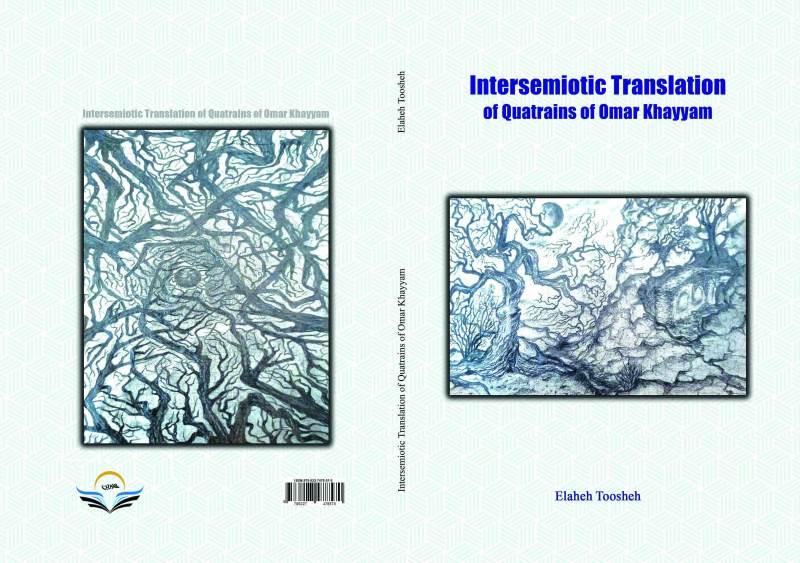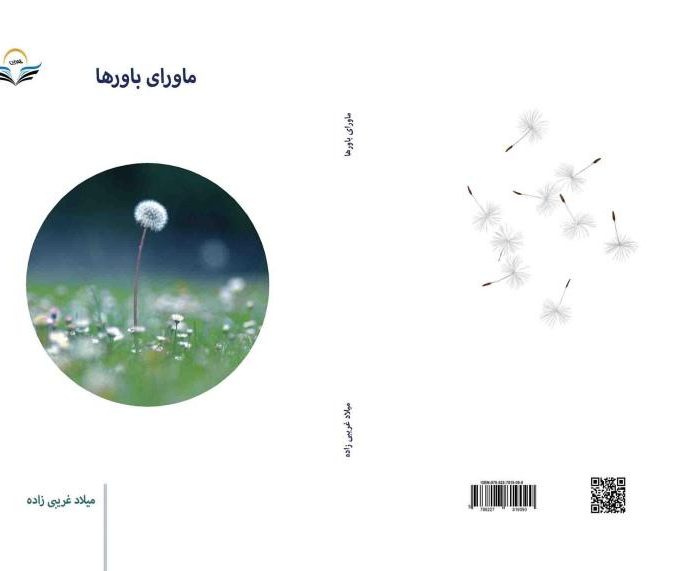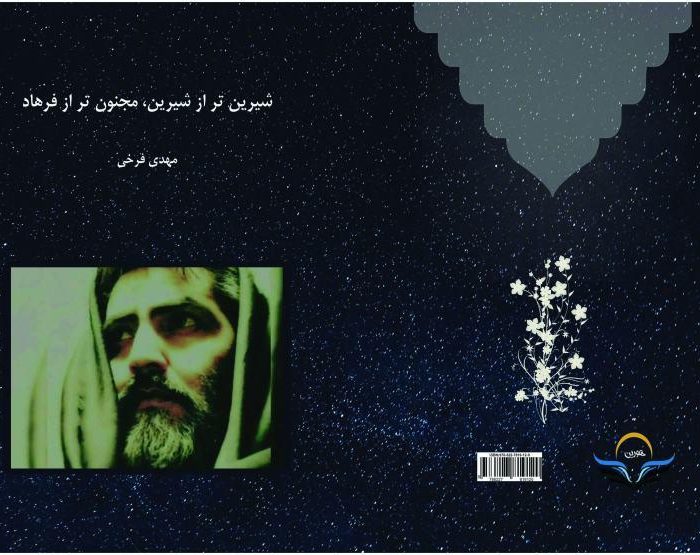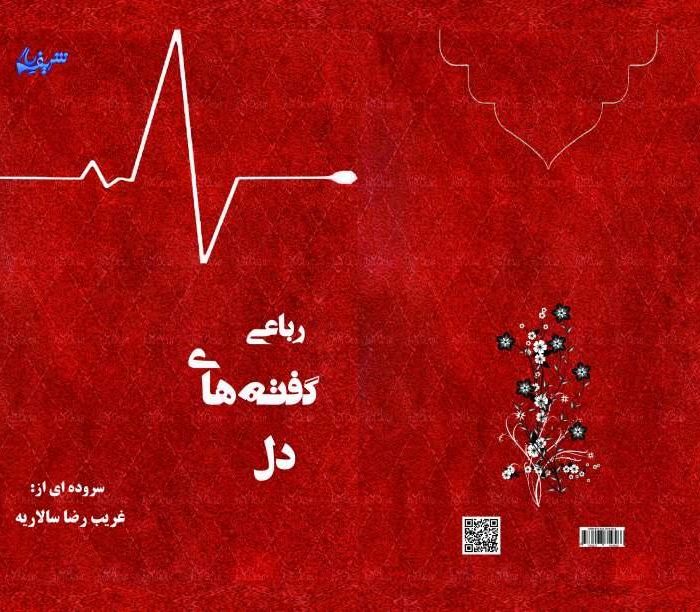کتاب Intersemiotic Translation of Quatrains of Omar Khayyam
- صفحه نخست
- رشته ها
- - ادبیات و زبان های خارجی
- زبان انگلیسی
- کتاب Intersemiotic Translation of Quatrains of Omar Khayyam
کتاب Intersemiotic Translation of Quatrains of Omar Khayyam
139,000 تومان
| تعداد صفحات | 66 |
|---|---|
| شابک | 978-622-378-062-2 |
LIST
Title page
Chapter 1 9
Introduction 9
Chapter 2 13
Intra-semiotic and Inter-semiotic Translation 13
Chapter 3 19
Analysis of Puttapipat’s illustrations as Inter-semiotic translation 19
References 61
The aim of this book is to study the intra-semiotic and inter-semiotic translations of the quatrains of Omar Khayyam as a way to examine to what extent each of these modes of translation have been successful in promoting the cultural literacy with respect to the Persian language within the target western audiences. The first intra-semiotic translation has been carried out by Edward FitzGerald and the second inter-semiotic translation has been carried out by the contemporary illustrator, Niroot Puttapipat based on the FitzGerald’s translation.
The intra-semiotic translation, or inter-lingual translation as Jakobson (1959) puts it, means translating within the domain of verbal system. This is the case with the FizGerald’s translation of Rubaiyiat (quatrains) of Khayyam. While translating Khayyam’s quatrains, FizGerald adopted two main translation strategies interchangeably, that is, Domestication and Foreignization (Venuti 1995).
Based on the definitions of these key terms proposed by Venuti (1995), in adopting the domestication approach to translation, the translator tries to translate the source text in conformity with the norms and cultural values of the target text. In other way, in the case of translations which have been carried with this approach, the source language’s cultural elements have been eliminated and re-created according to the norms and values of the target language; therefore, this type of translation has always failed to engage the target audiences in connecting with cultures different from their own.
On the other hand, under the same definition, in adopting the foreignization approach, the translator challenges the target language audiences by not adopting the cultural norms and values of the source language to the target language; as a result, the translations which are carried out with this type of strategy have the potential to familiarize individuals and communities with cultures different from their own.
Based on the above definitions of the two main translation strategies and with consideration to other researches carried out in this regard, it is fair to conclude that the intra-semiotic or inter-lingual translation of Khayyam’s quatrains carried out by FitzGerald is a kind of re-creation of the source text failing to accomplish the main mission of translation, i.e., connecting the target western audiences with the Persian and Islamic culture through transferring, rather than manipulating, the source language cultural elements.
As Zohdi and Rostami Abou Saeedi (201, p.1) state, “FitzGerald has not rendered an accurate translation and has done more or less a free translation”. His translation is ubiquitous as though he wasn’t loyal to some extent to the original quatrains. Zohdi and Rostami Abou Saeedi (2011, p.1) mention that “in his translation, many of the verses are paraphrased, and some of them cannot be confidently traced to any of Khayyam’s quatrains at all”.
The inter-semiotic translation, or transmutation translation as Jakobson (1959) puts it, means translating between two different media, for example, from the verbal medium into non-verbal medium. That is, in this type of translation, the translator conveys the sense and meaning of the source text through a different non-verbal media, for instance visual, auditory and other sensory channels. This is the case with the illustrations of Niroot Puttapipat based on the FizGerald’s translation of Rubaiyiat of Khayyam.
By examining these illustrations based on Venuti’s (1995) two main strategies to translation and Pereira’s three approaches towards illustrating, it has been found that similar to FizGerald, Puttapipat also made use of the domestication and foreignization translation approaches while creating his illustrations. However, contrary to FizGerald, he mostly applied the foreignization approach a way to challenge the target culture audiences by transferring the Iranian and Islamic cultural elements.
Therefore, in contrast to FizGerald’s intra-semiotic translation, it is fair to consider Puttapipat’s inter-semiotic translation successful in connecting the target western audiences with the Persian culture. It is, indeed, due to the fact that the illustrator has been well-aware of the Persian language and culture and he has tried to transfer the source language’s elements to their own western cultural norms and values.
Through the course of this book many issues will be discussed and their impact on the main approach the translator will adopt towards translation, be it intra-semiotic or inter-semiotic translation, will be examined. The main issues that will be discussed are as follow: the relation between the familiarity of the translator with the source language and culture and the loyalty in transferring the source language’s cultural elements to the target language and culture, the potential the inter-semiotic translation has in better connecting with the target audiences.
Intersemiotic translation is considered as the basis of cultural communication through which ideas are expressed and translated using visual, auditory and other semiotic resources. From this perspective, intersemiotic translation is conceptualized through the principle of collaborative translation in which the recipient (viewer, listener, reader or participant) is actively engage in re-creating the sense (or semios) of the source text for him or herself.
However, with the capacity to function as an interactive, participative platform engaging the intersemiotic translator and recipients in the dynamic process of creative intersemiotic interpretation of the source text, intersemiotic translation is still an under-researched area within the domain of translation.
Since the introduction of Jacobson’s (1959) classification of three types of translation and recognition of the intersemiotic translation as one form of translation together with the inter-lingual, intra-lingual ones, barely has this type translation received attention by researchers. Indeed, Baker (2009) mentioned this fact by stating that
I know of no research that looks specifically at the phenomena of intralingual or intersemiotic translation. We do have classifications such as Jakobson’s, which alert us to the possibility of such things as intersemiotic and intralingual translation, but we do not make any genuine use of such classifications in our research.
With that being said, it is now time to give the intersemiotic translation, the attention it deserves within the field and this book is an attempt to do so. Therefore, the focus of this book is on the intersemiotic translation from the linguistic written text (FitzGerald’s translation of Khayyam’s Quatrains) to non-linguistic illustrations (Niroot Puttapipat’s depictions) as a way to study whether the embodiment of the linguistic translation using different semiotic resources, in this case illustrations, has resulted in accessing to a new meaning potential and how shifts of meaning have taken place across different semiotic resources, i.e., from a verbal to non-verbal medium and what meanings are retained and changed as a result of the approaches adopted by illustrator, namely the domestication and foreignization approaches.
According to Pereira (2008), one of the pioneer researchers in the field, the inter-semiotic translation via the medium of illustrations not only re-creates the literary and cultural values of the text, but multiplies those values into different cultural systems each time the work is illustrated – acting, thus, as refractions/rewritings of the text into different cultures, in a similar way as translations do” (p.6).
Pierce also mentioned three main different semiotic resources through which meaning can be transferred, namely icons, indexes, and symbols and has defined them as follow:
Icons are signs that stand for their objects through similarity or resemblance. A sign refers to an object in virtue of a certain quality that sign and object share. Indexes are signs that refer to an object due to a direct physical connection between them. Since in this case the sign should be determined by the object, for instance, through a causal relationship, both must exist as actual events. This is an important feature distinguishing iconic from indexical sign-mediated processes. Finally, symbols are signs that are related to their object through a determinative relation of law, rule or convention. A symbol becomes a sign of some object merely or mainly by the fact that it is used and understood as such.
In another classification, Gottlieb (2005, p.4) divided translation semiotically into four categories:
1. Isosemiotic translation communicates exactly through the same semiotic channels as the original, for example, dubbing.
2. Diasemiotic translation is characterized by its use of different channels, while the number of channels is the same as in the original text (such music based on sculpture and poem into painting).
3. Supersemiotic translation, the translated texts display more semiotic channels than the original- as when a novel is semiotically unfolded into a film.
4. Hyposemiotic translation, the channels of which are less than the original, for instance, a mime artist performs a piece.
Based on the above categories, we can classify the illustration of quatrain of Omar Khayyam, which is the subject of this study, as diasemiotic translation and Puttapipat him as the diasemiotic translator who translate the text semiotically.
Pereira’s (2008) three-fold categorization of illustration, including the literal intersemiotic translation, i.e., the recreation of the textual elements such as the main actions and events by the illustrator, the depiction of the characters of the narrative text such as antagonist and protagonist and the adaptation of the pictures to a specific ideology or artistic trend.
In consideration of the above definitions and discussion, regarding the first intra-semiotic translation of the quatrain of Omar Khayyam, it can be concluded that the translation strategy used extensively by FitzGerald is domestication as he adapted the Khayyam’s quatrains to the western culture.
And regarding the second inter-semiotic translation based on the Pereira’s (2008) classification, it can be stated that Puttapipat, the illustrator, has used the same translation strategy of domestication as the first translator has.
According to Pereira (2008), during the process of the inter-semiotic translation, the illustrator can make use of the same translation strategies as the intra-semiotic translator can. That is, the illustrator can reproduce the textual elements literally or adapt them to a particular ideology or emphasize a specific narrative. He also mentioned that the same techniques and approaches, e.g., addition, omission, explicitation, condensation, which characterize the intra-semiotic translation are applicable to the inter-semiotic translation.
In addition, Pereira focused on the impact of the ideology of the inter-semiotic translator on his or her illustration by studying the illustrations of the two French editions of the Aeneid, Kallendorf (2001).
| تعداد صفحات | 66 |
|---|---|
| شابک | 978-622-378-062-2 |
.فقط مشتریانی که این محصول را خریداری کرده اند و وارد سیستم شده اند میتوانند برای این محصول دیدگاه(نظر) ارسال کنند.
محصولات مرتبط
-
کتاب Teachers’ Self-Efficacy and Self-Awareness and Learners’ Achievement
امتیاز 0 از 5149,000 تومان







نقد و بررسیها
هنوز بررسیای ثبت نشده است.